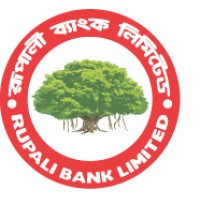Company Cyber Security Posture
NANA
NA Company Details
NA
NA
NA
NA
NA
NA
Scan still pending
NA
NA
Between 200 and 800
This score is AI-generated and less favored by cyber insurers, who prefer the TPRM score.
 NA Global Score
NA Global Score.png)

Company Scoring based on AI Models
| Model Name | Date | Description | Current Score Difference | Score |
|---|---|---|---|---|
| AVERAGE-Industry | 03-12-2025 | This score represents the average cybersecurity rating of companies already scanned within the same industry. It provides a benchmark to compare an individual company's security posture against its industry peers. | N/A | Between 200 and 800 |
Company Cyber Security News & History
| Entity | Type | Severity | Impact | Seen | Url ID | Details | View |
|---|
Company Subsidiaries

NA
Access Data Using Our API

Get company history
.png)
NA Cyber Security News
India-Pak tensions: Banks told to ensure sufficient cash in ATMs, strengthen systems to tackle cyber threats
Amid escalating tensions between India and Pakistan, the Department of Financial Services (DFS) has asked banks to strengthen their internal ...
SBI, PNB, Canara Bank Reassure Public: No ATM Shutdown Amid Indo-Pak Tensions, Ensure Full Functionality
Leading Indian banks, including SBI and PNB, have assured citizens that ATMs and digital banking services are fully operational, ...
28-Year-Old Lost 2 Lakhs by Just Downloading Image in WhatsApp
A 28-year-old man from Maharashtra became the latest victim of a sophisticated WhatsApp scam. Pradeep Jain, unsuspecting and going about his ...
Canara Bank: A Comprehensive Guide for Investors
5 EMS Stocks in India to Watch Out for in the Long Term · #1 Avalon Technologies · #2 Cyient DLM · #3 Epack Durable · #4 Kaynes Technology · #5 Syrma ...
Canara Bank announces S. K. Majumdar as Executive Director
Canara Bank is pleased to announce the appointment of Shri SK Majumdar as Executive Director of the Bank, with effect from March 24, 2025.
Canara Bank to open cyber security wing, stepping up AI adoption to predict online frauds & loan defaults
Canara Bank is set to launch a separate cyber-security wing from April 1 to enhance its investment in cybersecurity initiatives and protect ...
Fin Min asks banks to ensure cash at all branches, ATMs amid tension | Today News
All Rights Reserved. Popular Premium. Quess once staffed India's factories. Now, it is putting AI agents to work. 11 min read . 30 Jun 2025.
Hyderabad’s ₹5.66 crore ‘digital arrest’ scam shines spotlight on vulnerabilities in Indian banking
Hyderabad woman loses ₹5.66 crore in digital scam; experts call for banking system overhaul to prevent fraud.
PSU banks refute rumours, say ATMs well stocked and fully functional
Dismissing rumours, public sector banks including State Bank of India and Punjab National Bank on Friday said their ATMs are fully functional, well-stocked.

NA Similar Companies

Caja Madrid
CAJA MADRID is the fourth Spanish financial group and it holds an outstanding position in credit markets and client resources. The CAJA MADRID Group offers a complete range of products and services of retail banking, business banking and private banking, with which it attends to the needs of 7 mi

Rupali Bank Limited
Rupali Bank (Bengali: রূপালী ব্যাংক) is a commercial bank in Bangladesh. It was established as a nationalised bank in 1972 under the Bangladesh Banks Nationalisation Order, through the amalgamation of the branches of Muslim Commercial Bank, Australasia Bank and Standard Bank that were operating in E

ING
ING is a pioneer in digital banking and on the forefront as one of the most innovative banks in the world. As ING, we have a clear purpose that represents our conviction of people’s potential. We don’t judge, coach, or tell people how to live their lives. However big or small, modest or grand, we em

DenizBank
In 1997, DenizBank was acquired by the Zorlu Holding in the form of a banking license from the Privatization Administration. Undergoing three shareholder changes and done public offering in its short history, the Bank was acquired in October 2006 by Dexia, one of the leading financial groups of Euro

Türkiye İş Bankası
In the nearly 100 years since its founding by the Great Leader Mustafa Kemal Atatürk on August 26, 1924, İşbank has undertaken various roles and made significant contributions to the development of our country in many fields, especially in industry and trade. İşbank offers products and services to

CIBC
CIBC is here to help all our clients reach their goals. We know the importance of reliable financial products and services, and we’re dedicated to providing them in a way that lets you bank however you want, whenever you want. With innovative tools designed around your priorities and a team ful

Frequently Asked Questions
Explore insights on cybersecurity incidents, risk posture, and Rankiteo's assessments.
NA CyberSecurity History Information
How many cyber incidents has NA faced?
Total Incidents: According to Rankiteo, NA has faced 0 incidents in the past.
What types of cybersecurity incidents have occurred at NA?
Incident Types: The types of cybersecurity incidents that have occurred include .
Additional Questions
What Do We Measure?
















Every week, Rankiteo analyzes billions of signals to give organizations a sharper, faster view of emerging risks. With deeper, more actionable intelligence at their fingertips, security teams can outpace threat actors, respond instantly to Zero-Day attacks, and dramatically shrink their risk exposure window.
These are some of the factors we use to calculate the overall score:
Identify exposed access points, detect misconfigured SSL certificates, and uncover vulnerabilities across the network infrastructure.
Gain visibility into the software components used within an organization to detect vulnerabilities, manage risk, and ensure supply chain security.
Monitor and manage all IT assets and their configurations to ensure accurate, real-time visibility across the company's technology environment.
Leverage real-time insights on active threats, malware campaigns, and emerging vulnerabilities to proactively defend against evolving cyberattacks.




